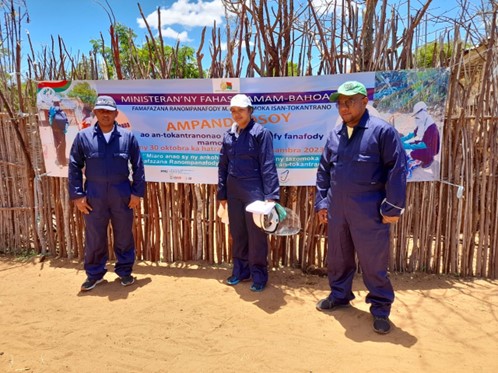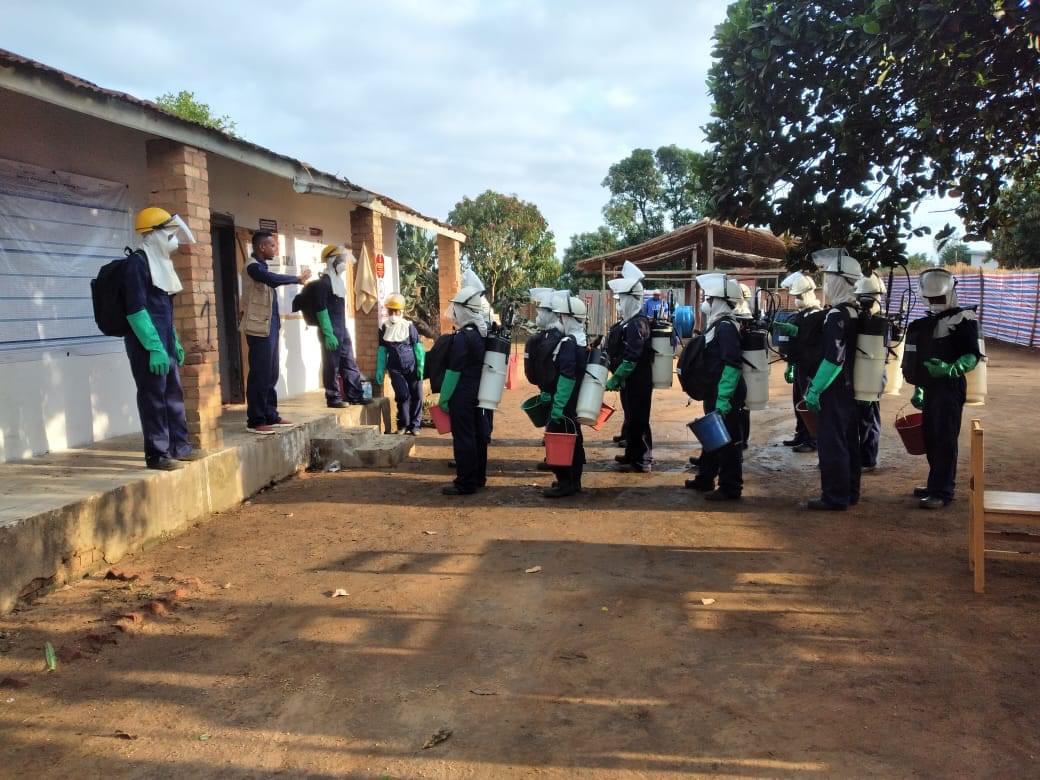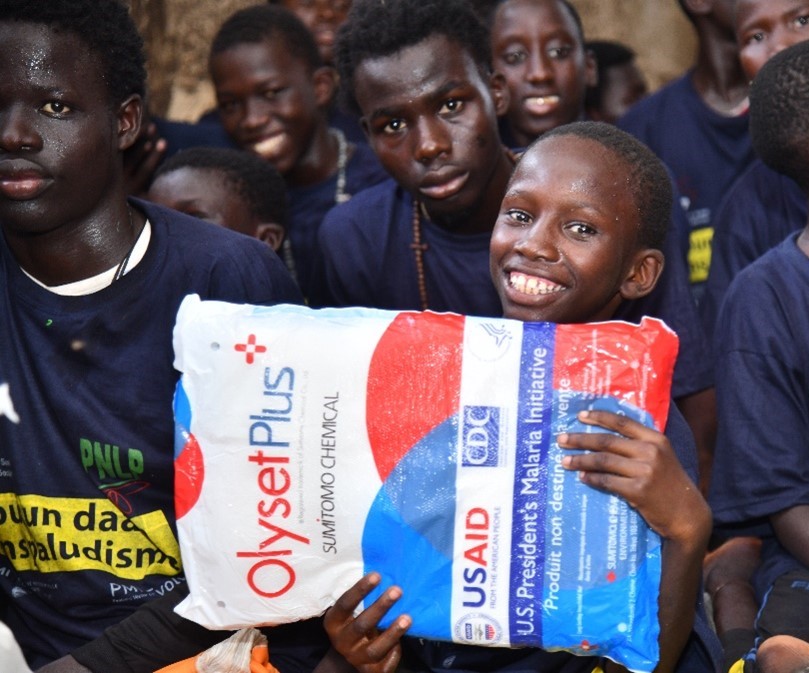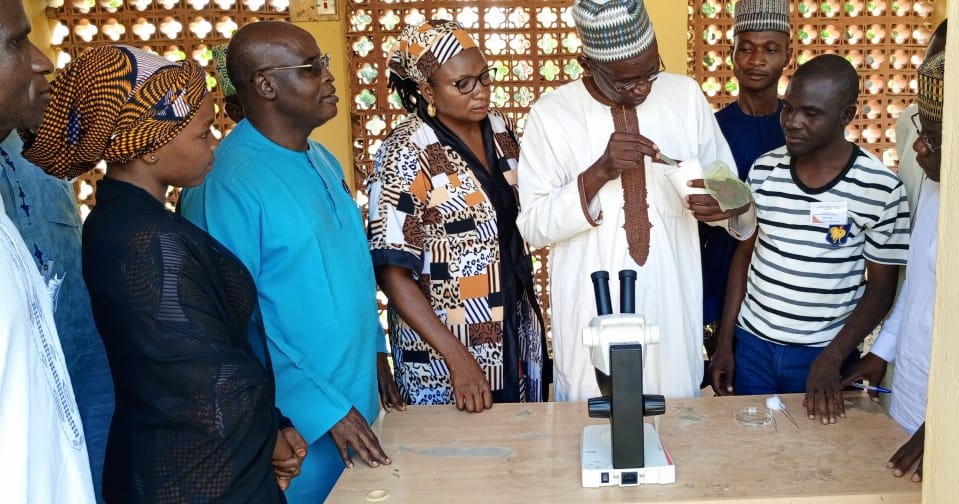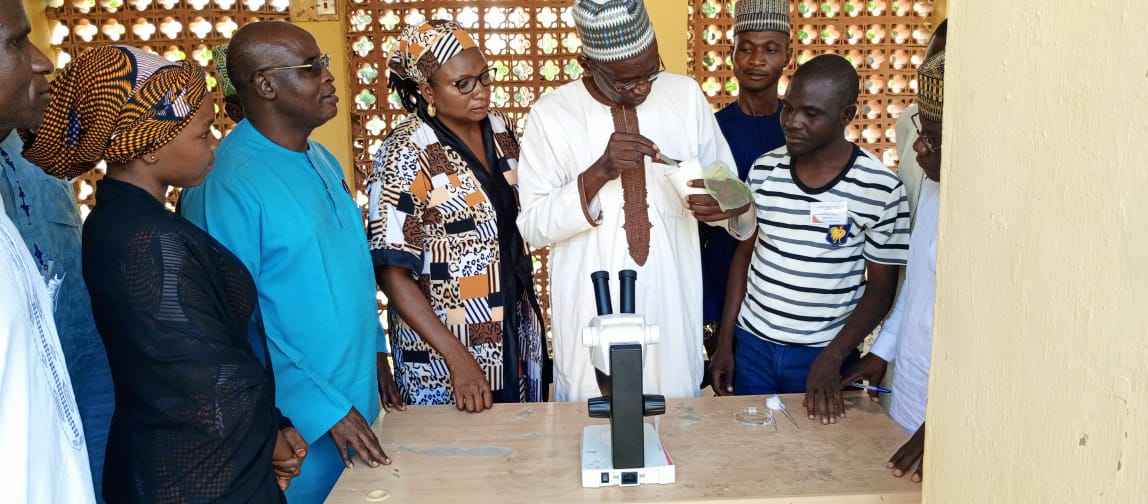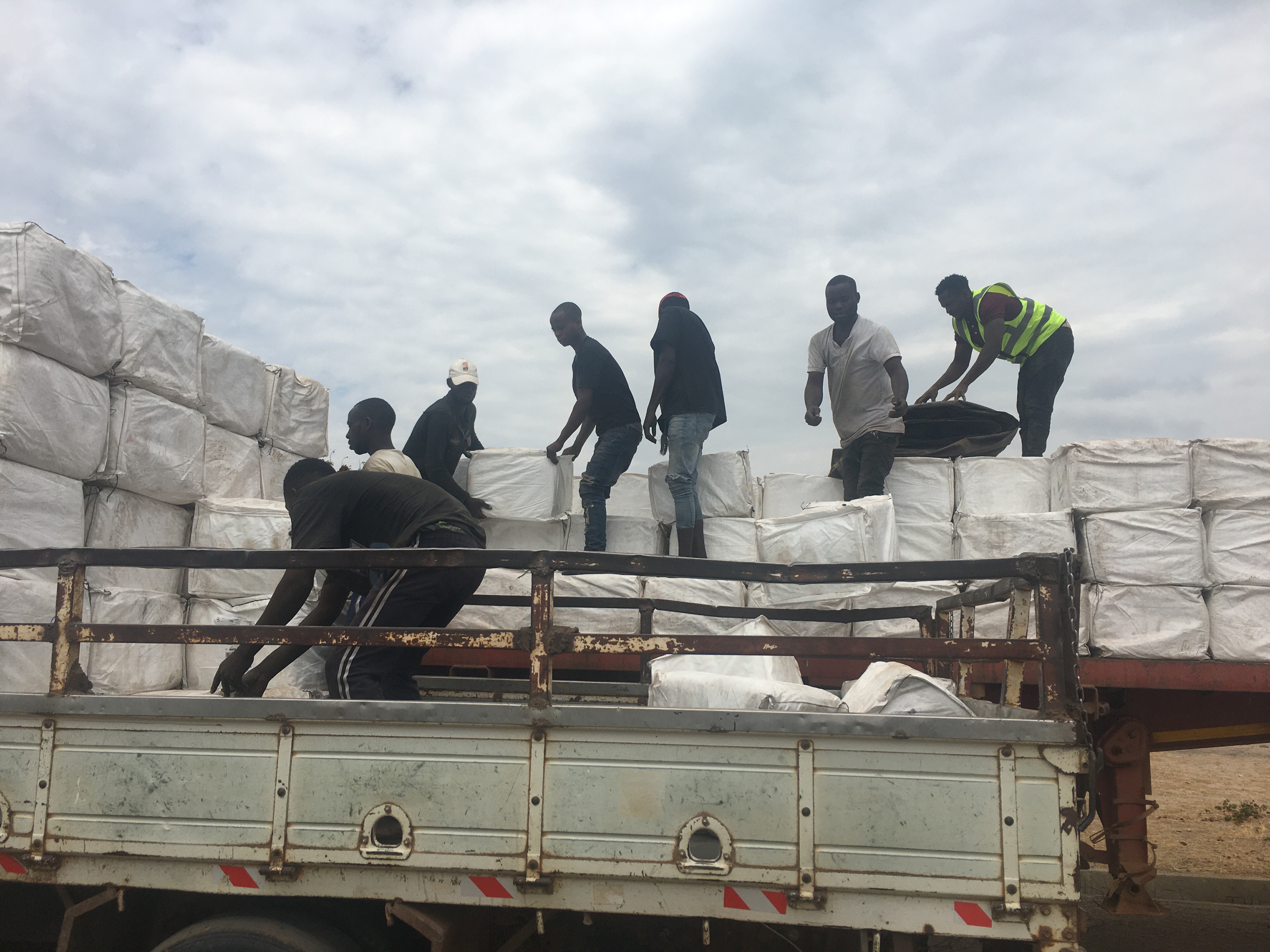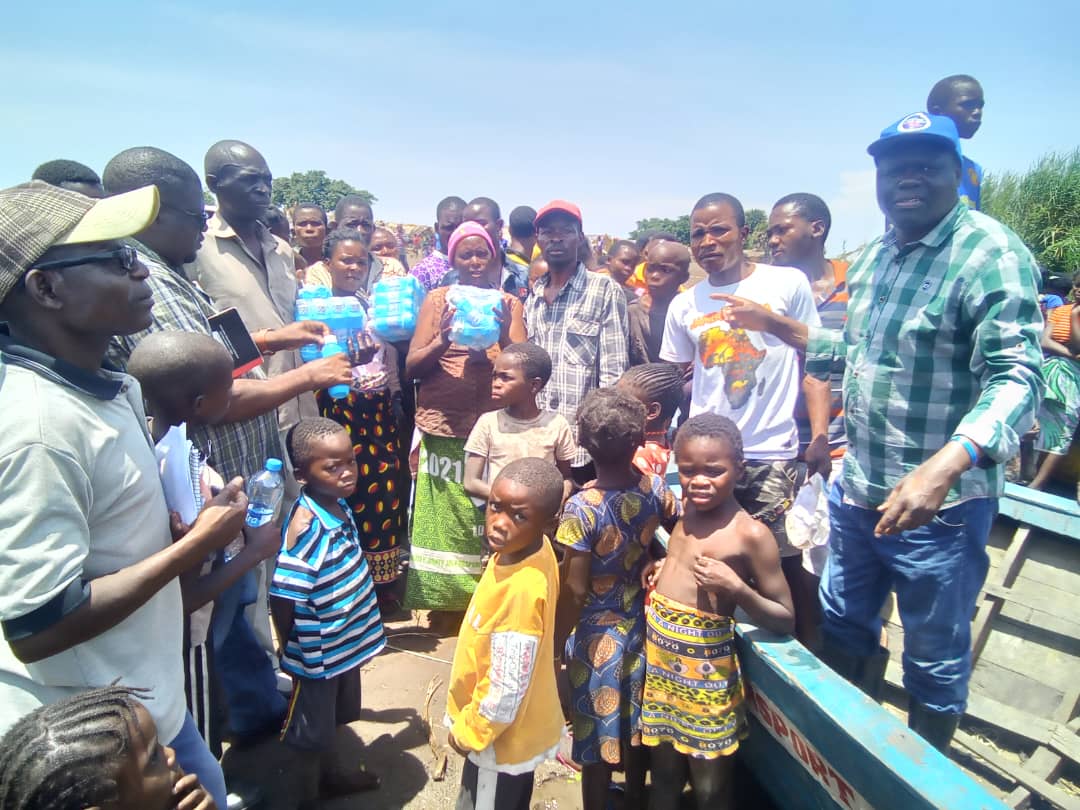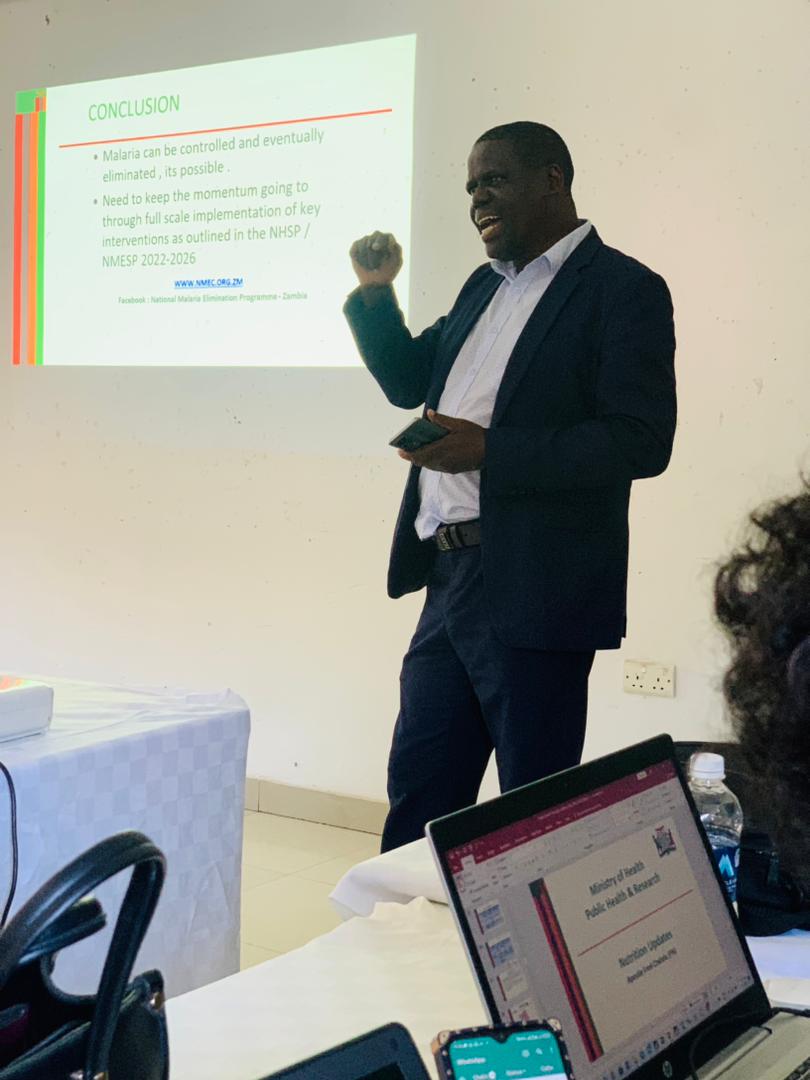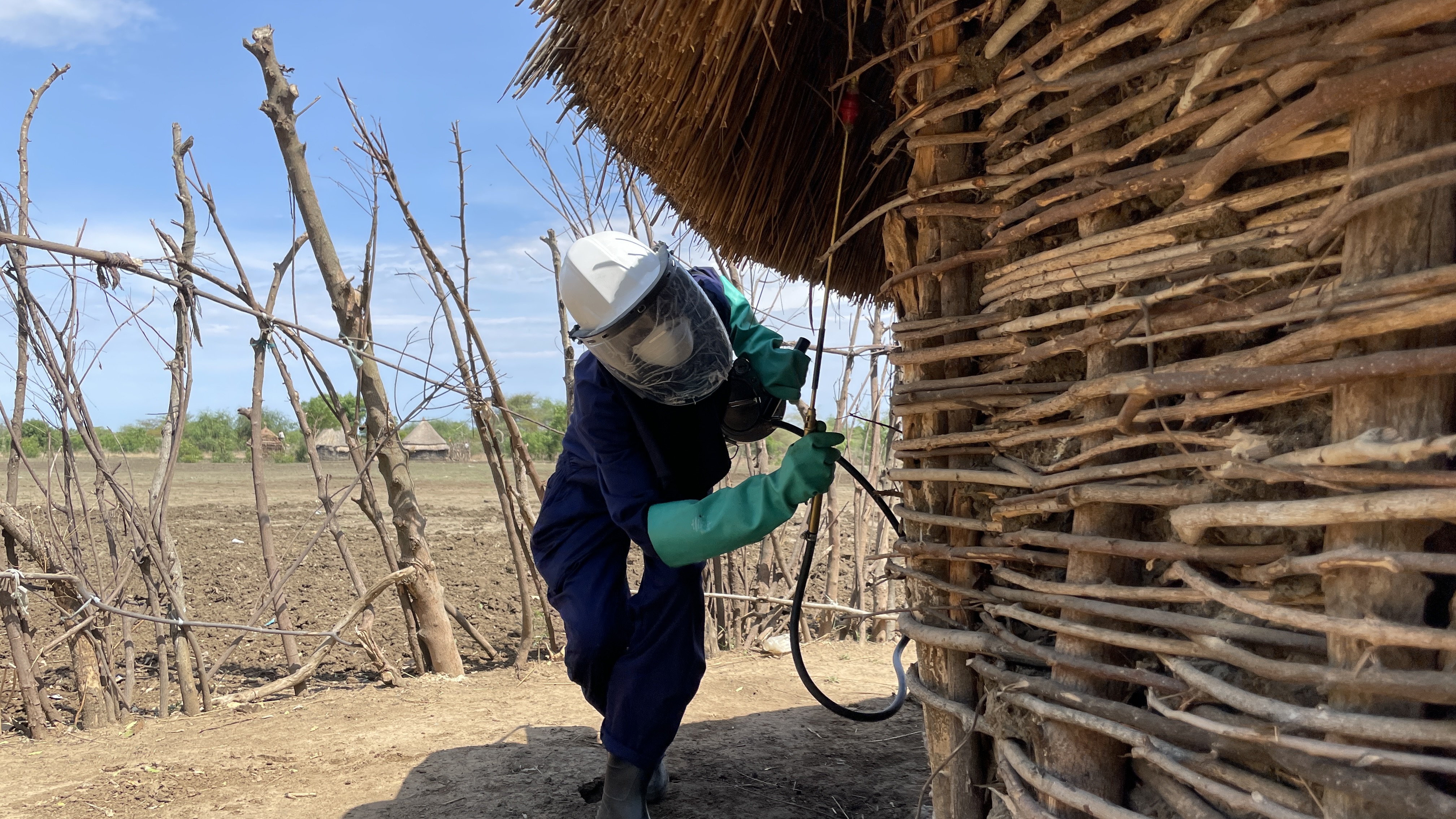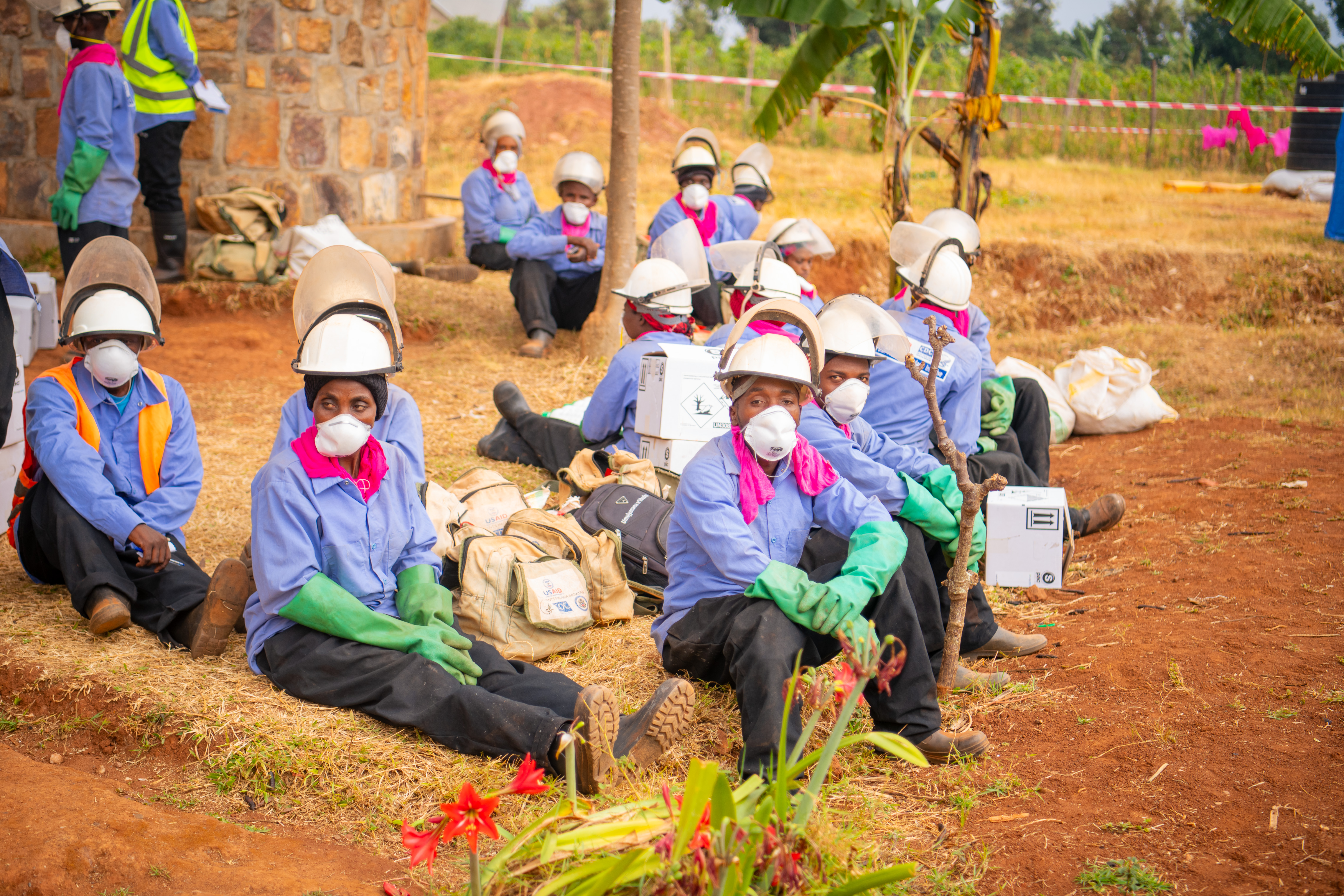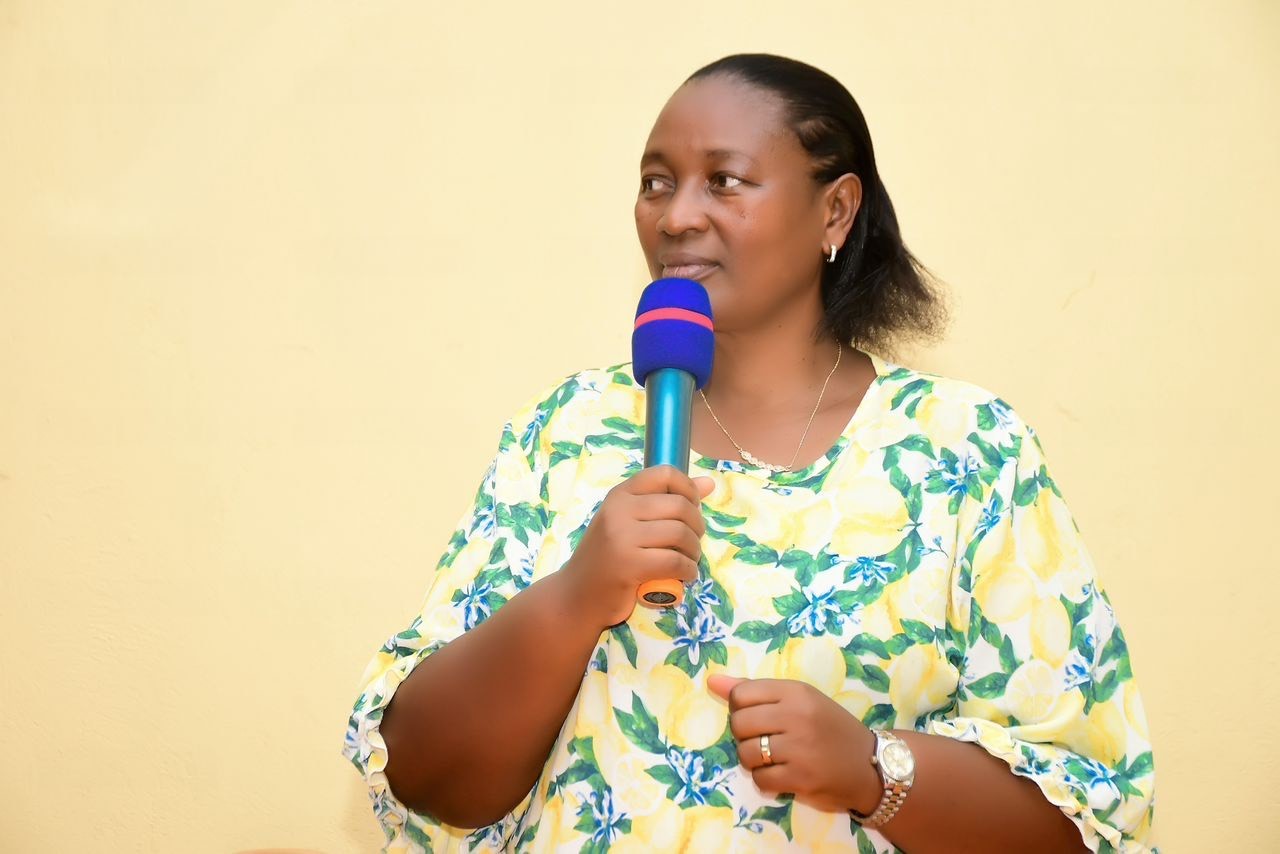The American Society of Tropical Medicine and Hygiene (ASTMH) Annual Meeting is the premier forum for the exchange of scientific advances in tropical medicine, global health, and hygiene. This year’s event is taking place at the Hyatt Regency in Chicago, Illinois, USA.
PMI Evolve is pleased to announce our participation through the following oral presentations, and poster presentations, as follows.
Thursday, October 19
Poster Session A | 12:00 p.m. – 1:45 p.m. | Riverside Center East Tower
Poster number 5198: The Impact of Four Years of Indoor Residual Spraying with No-Pyrethroid Insecticides (Pirimiphos-Methyl and Chlothianidin) on Entomological Drivers of Malaria Transmission in Burkina Faso, West Africa
Presenter: Dieudonné Diloma Soma, Recherche en Sciences de la Santé (IRSS)
Key Message: The findings revealed a high efficacy of SumiShield 50 WG and Fludora Fusion WP-SB, which lasted more than six months, indicating that they could be added to the list of potential insecticides for indoor residual spraying activities where there is pyrethroid resistance.
To view more information on the abstract click on the number above or view here.
Poster number 5204: Changes in the biting behavior of Anopheles gambiae s.l. following the combination of mass- distribution campaigns of insecticide-treated nets and indoor residual spraying over Five years in Kiremba, Northern Burundi
Presenter: Denis Sinzinkayo, The PMI Evolve Project, Abt Associates
Key Message: The shift in biting behaviors of An. gambiae s.l., from equally feeding indoor and outdoor to predominantly feeding outdoor, may be associated with continuous indoor-based vector control interventions in Kiremba, Northern Burundi.
To view more information on the abstract, click on the number above or here.
Poster number LB- 8115: Targeting animal structures for indoor residual spraying in response to shifting behaviors reduces malaria cases in Northern Ghana
Presenter: Osei Akuoko, The PMI Evolve Project, Abt Associates
Key Message: Spraying animal shelters and sleeping rooms could have significant impact on malaria transmission in areas with similar characteristics to northern Ghana.
To view more information on the abstract, click on the number above or here.
Poster number 5197: Composition and seasonality of Anopheles gambiae s.l. and Anopheles funestus s.l. in Liberia
Presenter: Ibrahima Baber, The PMI Evolve Project, Abt Associates
Key Message: An. gambiae s.l. and An. funestus s.l. show spatial and seasonal variation in their distribution. Further molecular tests for identification of both vectors to the species level, and analysis of parasite infection rate and host preference is underway to better understand trends in malaria transmission risk by space and time.
To view more information on the abstract, click on the number above or here.
Poster number 5195: Differential Risk of Exposure to An. gambiae s.l. and An. funestus s.l. Biting Estimated from Human Behavior Observation Adjusted Analysis in Malawi
Presenter: Nellie Kaunde, The PMI Evolve Project, Abt Associates
Key Message: In six high malaria burden districts, most of the human-vector contact occurs indoors while people are asleep, thus an increase in ITN usage above the current 60% would substantially reduce malaria transmission in these districts.
To view more information on the abstract, click on the number above or here.
Poster number 5188: Monitoring pyrethroid resistance intensity in populations of Anopheles gambiae s.l. across Five Ecological Zones in Nigeria and the Implications for Vector Control Decisions
Presenter: Petrus Inyama, The PMI Evolve Project, Abt Associates
Key Message: The insights from this multi-year pyrethroid intensity data analysis further justifies the need to deploy novel and/or combinations of insecticides with different modes of action for the most effective vector control interventions.
To view more information on the abstract, click on the number above or here.
Poster number 5229: Observations on key entomological and malaria indicators during the periods of Indoor Residual Spraying with pirimiphos-methyl and clothianidin-based products in Zambia
Presenter: Mohamed Bayoh, The PMI Evolve Project, Abt Associates
Key Message: Study results suggest that pirimiphos-methyl could be safely reintroduced into the IRS insecticide rotation in these areas in Zambia with no significant adverse effect on programmatic outcomes, however additional analyses controlling for additional confounders are still needed.
To view more information on the abstract, click on the number above or here.
Friday, October 20
Poster Session B |12:00 p.m. – 1:45 p.m. | Riverside Center East Tower
Poster number 5884: Assessing insecticide resistance profile of Anopheles gambiae s.l. for strategic vector control decision making in Guinea
Presenter: Evelyne Alyko, The PMI Evolve Project, Abt Associates
Key Message: Resistance to pyrethroids was observed at all study sites at a high intensity. An. gambiae was fully susceptible to chlorfenapyr, suggesting that chlorfenapyr-based ITNs could be effective malaria prevention tools, and these findings support Guinea’s decisions regarding the most appropriate ITNs to use in-country.
To view more information on the abstract, click on the number above or here.
Poster number LB- 8201: Field performance of Interceptor®, Interceptor® G2, and PermaNet® 3.0 brand insecticide-treated nets across three districts in Burkina Faso over 36 months – Results from a 2019-2022 durability monitoring study
Presenter: Jacky Raharinjatovo, The PMI Evolve Project, PSI
Key Message: New pyrethroid plus chlorfenapyr and pyrethroid + piperonyl butoxide ITNs exceeded their three-year estimated survival expectation under field conditions in Burkina Faso. Determinants of increased ITN survival were also identified, which can be incorporated into social behavior change messaging during subsequent routine and mass ITN distributions.
To view more information on the abstract, click on the number above or here.
Poster number 5942: Impact of Indoor Residual Spraying on Entomological Indices in Sakassou, Central Côte d’Ivoire
Presenter: Bernard Kouassi, The PMI Evolve Project, Abt Associates
Key Message: A significant reduction of malaria transmission indicators was observed after spraying and throughout three consecutive years of IRS; these results are consistent with preliminary findings on the epidemiological impact of two of the IRS campaigns, indicating that IRS represents an effective intervention in Côte d’Ivoire to control malaria vectors and decrease the disease incidence.
To view more information on the abstract, click on the number above or here.
Poster number LB- 8444: Larval source management implementation for the control of Anopheles stephensi in Ethiopia (August 2022-April 2023)
Presenter: Meshesha Balkew, The PMI Evolve Project, Abt Associates
Key Message: LSM can be used in urban settings where insecticide-treated net utilization is low and indoor residual spraying is not feasible but may require the engagement of local governments and communities to be sustainable.
To view more information on the abstract, click on the number above or here.
Poster number 5946: Assessing Entomological Impact of a Larval Source Management Pilot Using Aerial Spraying of Rice Fields with Drones in Two Districts of Madagascar
Presenter: Jean Desire Rakotoson, The PMI Evolve Project, Abt Associates
Key Message: Entomological monitoring activities conducted before, during and after the pilot aerial spraying of larvicide using Bti suggests that larviciing should be considered an an appropriate complementary strategy in areas with outdoor biting and seasonal malaria transmission.
To view more information on the abstract, click on the number above or here.
Session: 92 – Mosquitoes – Biology and Genetics of Insecticide Resistance | 4:00 p.m. – 5:45 p.m. | Grand Ballroom CDEF – Ballroom Level (East Tower)
Abstract Number 6442: Evidence Supporting Deployment of Next Generation Insecticide Treated Nets in Burkina Faso: Bioassays with Chlorfenapyr and Piperonyl Butoxide Increase Mortality of Pyrethroid-Resistant Anopheles gambiae
Presenter: Aristide Hien, Institut de Recherche en Sciences de la Santé (IRSS)
Time of Presentation: 4:45 p.m.
Key Message: After two to three years of field use in Burkina Faso, Rwanda, Sierra Leone and Burundi, the chemical content of insecticide treated nets (ITNs) containing chlorfenapyr or piperonyl butoxide is dropping more precipitously than expected, which could be adversely affecting the ITNs’ ability to protect against pyrethroid-resistant mosquitos.
To view more information on the presentation, click here
Scientific Session 100 – Malaria – Epidemiology: Intervention Impact on Infection, Disease and Mortality | 4:00 p.m. – 5:45 p.m. | Regency Ballroom D – Ballroom Level (West Tower)
Abstract Number 6860: Reduction of malaria case incidence following the introduction of clothianidin-based indoor residual spraying in previously unsprayed districts: an observational analysis using health facility register data from Cote d’Ivoire, 2018-2022
Presenter: Emily Hilton, The PMI Evolve Project, PATH
Time of presentation: 5:32 p.m.
Key Message: The clothianidin-based IRS deployed in 2020 and 2021 was associated with substantially reduced malaria case rates in two districts of Côte d’Ivoire. This study is among the first to demonstrate a positive impact of clothianidin-based IRS on clinically reported malaria case incidence.
To view more information on the presentation, click here.
Saturday, October 21
Poster Session C |11:00 a.m. – 12:45 p.m. | Riverside Center East Tower
Poster number 6860: Reduction of malaria case incidence following the introduction of clothianidin-based indoor residual spraying in previously unsprayed districts: an observational analysis using health facility register data from Cote d’Ivoire, 2018-2022
Presenter: Emily Hilton, The PMI Evolve Project, PATH
Key Message: Clothianidin-based IRS deployed in 2020 and 2021 was associated with substantially reduced malaria case rates in two districts of Côte d’Ivoire. This study is among the first to demonstrate a positive impact of clothianidin-based IRS on clinically reported malaria case incidence.
To view more information on the abstract, click on the number above or here.
Poster number LB- 8307: Larval source management for the control of Anopheles stephensi in Ethiopia: Entomological Monitoring Results
Presenter: Hiwot Solomon, Directorate of Disease Prevention and Control, Federal Ministry of Health, Ethiopia
Key Message: LSM has resulted in substantial reduction of Anopheles larval density and larval habitat positivity, and therefore, this method may be an appropriate primary control intervention for An. stephensi.
To view more information on the abstract, click on the number above or here.
Poster number 6633: Impact of a new insecticide-treated nets and indoor residual spraying on entomological indicators of malaria transmission in Rwanda
Presenter: Elias Niyituma, The PMI Evolve Project, Abt Associates
Key Message: After the deployment of IRS and distribution of IG2 and PBO nets, the proportion of An. gambiae dropped significantly, with the entomological inoculation rate also reduced. These changes were accompanied by a shift in the dominant vector species composition, from An. gambiae s.s. to An. arabiensis.
To view more information on the abstract, click on the number above or here.
Sunday, October 22
Scientific Session 148 – Malaria – Prevention I | 8:00 a.m. – 9:45 a.m. | Grand Ballroom B – Ballroom Level (East Tower)
Abstract number 7197: Insecticide chemical content and bioefficacy of insecticide-treated nets containing chlorfenapyr or piperonyl butoxide over 24 months of field use in Burkina Faso, Rwanda, Sierra Leone, and Burundi
Presenter: Keith Esch, The PMI Evolve Project, PSI
Tim of presentation: 8:30 a.m.
Key Message: After two to three years of field use in Burkina Faso, Rwanda, Sierra Leone and Burundi, the chemical content of insecticide treated nets (ITNs) containing chlorfenapyr or piperonyl butoxide is dropping more precipitously than expected, which could be adversely affecting the ITNs’ ability to protect against pyrethroid-resistant mosquitos.
To view more information on the presentation click here.
